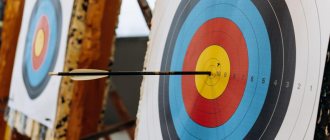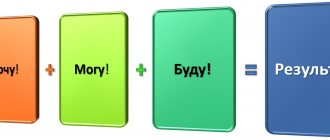To perform various daily tasks, a person needs different types of thinking. Cognitive abilities help you achieve success in all aspects of life, but not all people are well-developed in these qualities. For example, success in business largely depends on strategic thinking. Sufficient analytical skills are required to enable the individual to see intermediate tasks as the main goal is achieved. This often requires a kind of synthesis of creative and analytical thinking. Fortunately, cognitive abilities can be developed at any age.
What is strategic thinking
In psychology, strategic thinking is the cognitive ability that allows you to complete complex tasks. The main aspect of this quality is a step-by-step vision of the path to achieving the goal. An individual needs to be aware of the consequences that arise if certain decisions are made. This type of mind is opposed to straightforward thinking, where a person always chooses the most obvious way to solve a problem. The development of this personal quality is important in entrepreneurship, creativity, science and other activities.
Strategy is a term that comes to us from the ancient Greek language. Initially, this word was associated only with military craft. To win any battle, a general combat strategy was required, combining several tactics. Later the term became more general, so today strategy refers to a way to achieve a goal. The most accessible example is the game of chess. To win, the player must gradually change the position of his pieces. However, a straightforward approach is ineffective, since sometimes it is necessary to make sacrifices and make non-standard decisions.
Strategic thinking is required not only in logic games and military craft. The difficulties of everyday life force people to show analytical skills. This quality is inextricably linked with intelligence, since step-by-step planning of activities is a complex cognitive process. Individuals who constantly develop their minds achieve success in work and other areas of life.
Planning or Analysis
Some scholars believe that making a plan is fundamentally different from strategic thinking. So, according to Friedrich Gratz, these are two separate, but interrelated and complementary concepts. If strategic perception extends to all aspects of life and shapes the personality type, then planning is an actual process.
Table of differences:
Thus, there is a type of perception of the world and a specific activity. At the same time, the effectiveness of planning depends on the degree of development of intelligence and personal qualities.
Types of cognitive activity
Thinking is a cognitive process that gives a person the ability to observe changes in the world around him and make complex conclusions. Psychologists know the main types of thought processes. In different situations, people can use multiple cognitive functions to solve problems.
Main types of thinking:
- Visually effective. The study of the properties of objects in the surrounding world is carried out using physical interaction. A person gains the necessary experience and draws conclusions.
- Figurative. An idea of the properties of objects and phenomena appears in consciousness, reflecting real experience. To re-learn properties, the individual no longer requires physical interaction.
- Verbal-logical. The emergence of spoken and written language is inextricably linked with the development of analytical abilities. Concepts about certain objects and phenomena arise in consciousness. Complex logical chains are formed.
- Abstract-theoretical. The main difference between humans and animals is the ability to analyze in isolation from direct observation and interaction. People imagine themselves in different situations every day and imagine what decisions they would make.
- Empirical. Over the course of their lives, people accumulate experience that sums up their understanding of the world around them. Experience helps to differentiate between theory and practice.
- Creative. This is the most complex type of cognitive activity, combining abstraction, subjective views and developed imaginative perception.
Successful planning depends to a large extent on a combination of abstract-theoretical, visual-effective and creative thinking. You can learn to think strategically by improving these types of mental activities.
How to plan a trip
Last minute travel packages tempt you with their cheapness, but you rarely manage to leave at the last moment. We often plan a vacation a couple of weeks before departure and invest in the maximum amount.
There are basic principles for strategic travel planning:
Research the places you want to visit. Find out the climate and flight options. Plan several countries and be flexible - choose the one that will provide optimal conditions for visiting on your vacation.
Book your tickets while they're cheap. Subscribe to newsletters on airline websites or search aggregators. Keep an eye out for discounts on places like TripMyDream.
Determine the cost of living in the city in advance and plan a budget for your trip. On the Numbeo website you can see prices for basic products and services in any city.
Choose an insurance policy, book a hotel and calculate the cost of your stay. Make sure you don't have to pay extra for breakfast and internet. Find out if taxes are included in the booking price. It is more convenient to select an area on booking sites such as BedandBreakfast or Booking, but it is better to write directly to the hotel or apartment owner. This way you will get real information about your booking and save money.
Bring cash and credit cards with you before you leave. Find out if your card is valid abroad. Take copies of documents with you and store them separately from the originals. Check with your operator for roaming conditions. Save or learn all important phone numbers - bank, embassy, family, police.
Processes occurring in the brain during planning
The formation of strategic thinking occurs at the level of development of the central nervous system. It is the complex structure of the brain that allows a person to use cognitive processes to survive and improve living conditions. The main department of this organ, responsible for intelligence, abstract perception and emotions, is the cerebral cortex. This is an area of mass accumulation of neurons connected by long and short processes. Cellular processes allow the transmission of signals and the formation of the thought process.
Neuroscientists have been studying the functioning of the brain for a long time and trying to connect their results with cognitive activity. Already available data makes it possible to determine which department of the organ is responsible for certain functions. For example, activity planning is associated with the functioning of the prefrontal cortex. The impulses arising in this area are reflected in our consciousness in the form of goals and intermediate tasks. Intelligence and creativity depend on associative connections in the brain. During the process of maturation, neurons must form new connections. The innate properties of the nervous system and the characteristics of upbringing play an important role in the development of mental activity.
How to plan a budget
There are different programs for managing finances, from Microsoft Excel to mobile applications.
But apps can help you if you know the best budgeting principles.
Determine how much you earn. Add up all income and determine the total amount.
Look at what you're spending your money on. Utility bills, education, food, entertainment, clothing, treatment - enter all expenses into any accounting program.
Add up all expenses and subtract from income. If the number turns out to be negative, you are living beyond your means; you need to determine which expenses to cut. Determine how much money you need for items such as food at home, paying bills, treatment, transportation.
If there is still a difference between income and expenses, divide the money into groups. Of this amount, set aside 10–20% for unexpected expenses, 30% for a savings account. The remaining money can be spent on clothes, restaurants and entertainment.
Set financial goals. They should be short and long term. Short-term – set aside a certain amount each month. Long-term – the opportunity to make a down payment for an apartment.
Stay within your budget and don't expect a windfall.
Set aside money for a week at once. Leave credit cards at home unless you need them. Carry a fixed amount of cash with you.
Consider the difference between luxury and necessity.
Key Aspects
Strategy is a complex set of creative, rational, subjective and objective views of the world. To solve problems, you need to apply a variety of tactics (tools) in the right order. Some scholars believe that strategic thinking represents an advanced level of logic and rational thinking. Other experts note that strategy requires non-standard approaches, so logical inclinations are not enough to achieve goals. As a compromise, this quality should involve different types of mental activity depending on the circumstances.
Key aspects:
- Target
Before using cognitive activity, a person must decide on the ultimate goal. This could be moving up the career ladder, getting a good grade on an exam, getting money, or any other desired outcome.
- Plan
A complex problem cannot be solved without step-by-step planning of activities. An individual analyzes his steps in advance and creates a system of actions that can lead him to his cherished goal.
- Adaptation
In life, things don't always go according to plan. At every step, obstacles may appear that make the original idea meaningless. In this regard, flexibility of thinking is important, allowing you to quickly choose more effective tactics in different situations.
- Creativity
A good strategy often involves using the least obvious intermediate solutions. Stereotypes must be discarded.
The fundamentals of strategic thinking are universal. If any aspect is underdeveloped, overall performance decreases.
Imitation strategy
A sailing regatta provides an opportunity to analyze an interesting reverse version of the strategy of following the leader. As a rule, the leading sailboat copies the strategy of the ship following it. When the lagging sailboat changes course, the leader does the same. The leader copies the actions of the laggard, even if his strategy is clearly ineffective. Why? Because in sailing, only winning is important.
If you are already in first place, the surest way to stay first is to imitate the actions of those who are behind you.
Useful skills
After studying the key aspects of planning, you need to consider separately the skills on which the development of strategic thinking depends.
Collection of information
Obtaining all the necessary information about the goal, intermediate tasks, obstacles and possible tactics. Requires developed visual perception. If a person cannot obtain this information in advance, making a plan becomes pointless. Often, collecting information requires the ability to communicate with people, analyze, work with sources and “scroll through” various scenarios of events in your head.
Ability to distribute functions
In some situations, a team of people is needed to solve problems. Each team member is required to handle specific responsibilities. At the same time, the team requires a leader who can competently delegate authority. Collective planning relies heavily on social skills. It is necessary to gradually shape the thinking of a leader.
Action - transition from theory to practice
This is not such an easy skill as it might seem at first glance. Many people are called “theorists” for a reason. Even an ideal plan will not help achieve the goal if the individual does not begin implementation due to self-doubt. Constantly being active helps improve skills through trial and error. Excessive passivity deprives a person of experience and reduces the productivity of further planning.
These abilities can be developed at any age.
Development of abilities
You can improve your skills independently or under the supervision of a specialist. The approach depends on your goals and age. So, children need to do exercises to develop logic and engage in creative activities. Adults who want to improve strategic thinking in order to achieve career success can work with training managers and psychologists. A test for strategic thinking is first carried out, after which the optimal program is selected. In entrepreneurship and management, the ability to plan is considered a competence, so working with a specialist is never superfluous.
Useful tips:
- You need to receive as many positive emotions as possible to maintain motivation. This is a very important factor in any activity. It is recommended to periodically take a break from studying and devote time to hobbies.
- It is important to improve social skills, without which collective problem solving is impossible. To do this, you need to communicate more with people and learn to resolve issues without conflicts.
- Continuous acquisition of new knowledge. It is recommended to read more books and expand your horizons.
- It is necessary to solve strategic thinking problems. In the specialized literature you can find simple exercises to develop logic and creativity.
- Analysis before action. You should accustom yourself to this approach to achieve better results. To develop conditioned reflexes, such tactics should be applied in all areas of life.
- It is important to go to the end and achieve goals even when serious obstacles arise. Without this, learned helplessness is formed, making it difficult to move from theory to practice.
Improving cognitive abilities can take a long time. Often it is necessary to get rid of psychological rigidity that inhibits the acquisition of new skills.
Self-development as a leisure activity
If you are already tired of special exercises, you can diversify your training with a game. Strategic and logic games provide an opportunity to improve the skill of adapting to new situations. In addition, this is a wonderful option for a group pastime. You can improve your social skills and self-confidence along the way. Games that develop strategic thinking include chess, Rubik's cube, checkers, backgammon, dominoes and others. Don't be biased towards classic board games and children's entertainment.
How to plan things
You won't be able to organize only work projects. You also need to plan and organize your personal affairs. We have 4 resources that we need to learn to manage: time/tasks, focus, energy, tools.
Collect and write down your tasks on pieces of paper or in a planner. Write down everything that has accumulated, taking into account the books you want to read, plans for the future, and everyday little things.
After recording, process your list:
Discard tasks that you don’t want to do, things that won’t be useful in the future. If a task is important but not urgent, add it to the “one day” list and review it periodically.
If a task requires action, but it is not clear what, add it to the list of projects.
If the task is short and clear, don’t write it down in your planner, spend a couple of minutes on it right now.
If two minutes is not enough, find out if you can delegate the task. If possible, delegate and put it under control. If you can’t, put it on your to-do list and, if necessary, on your calendar.
Make a list like this every week. Distinguish tasks from projects and break projects into several stages of completion.
Main characteristics of the task:
The task sounds like the answer to the question “what needs to be done.”
It contains a verb.
It can be done in a maximum of 30 minutes with minimal use of the brain.
Problem formulation = action.
Make a plan for the day. Highlight three important things that need to be done during the week and keep them in a visible place. Distribute projects by month or quarter. In your calendar, add meetings, cinema, theater, training, events on a specific day and specific in time.
What are projects
When completing a task requires several actions, it is a project. Projects are carried out using the natural planning method. Those tasks that may affect the project must be solved first.
Natural planning stages:
define goals and principles for achieving them
create a picture of the end result
brainstorm
organize the result
determine next steps











